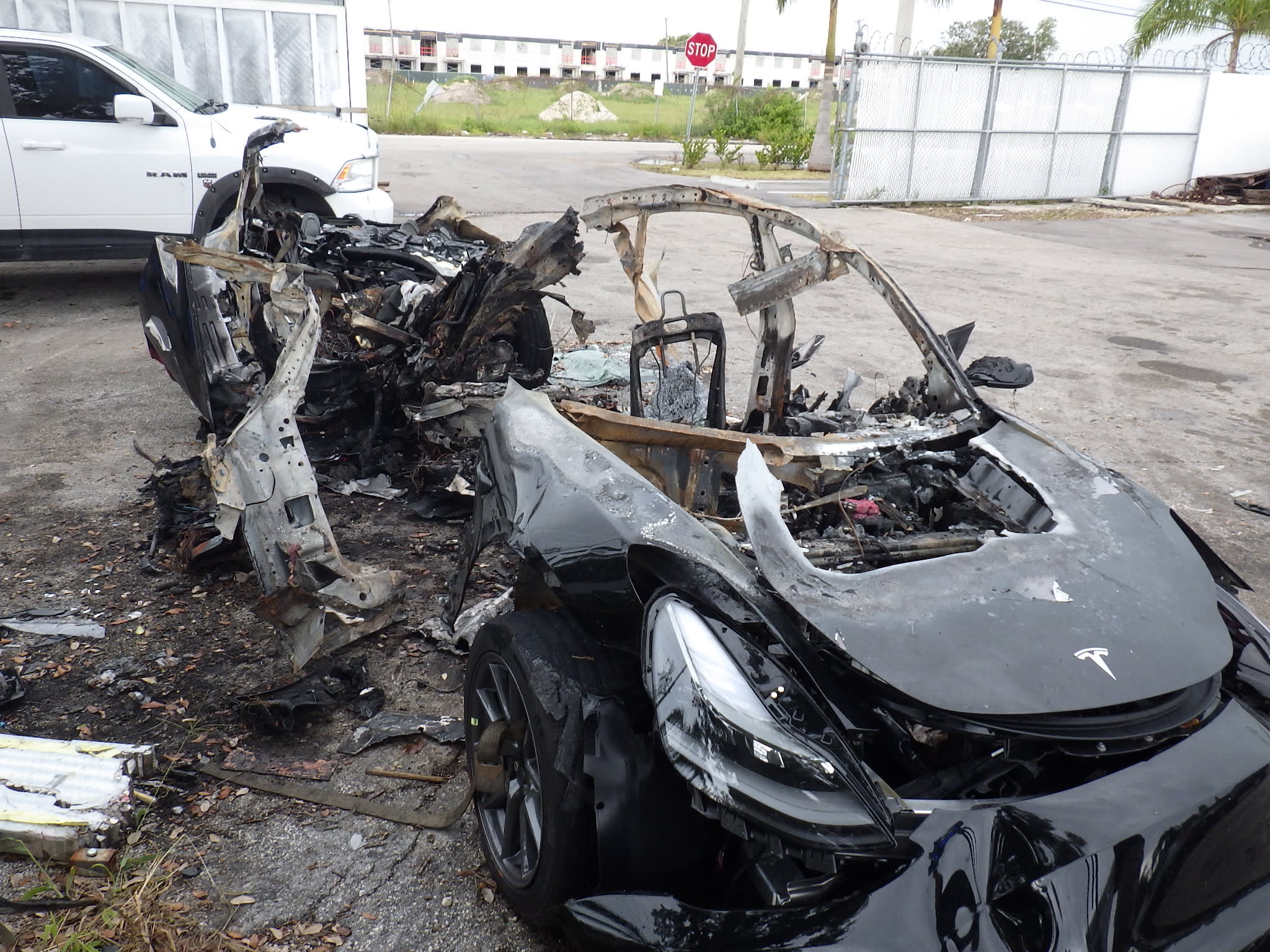The Tesla Model 3 involved in a fatal crash near Miami that killed two people on Sept. 13 was traveling as fast as 90 mph before hitting two trees and bursting into flames, according to preliminary findings of the incident by the National Transportation Safety Board.
The federal vehicle safety agency also found that the 20-year-old driver did not attempt to use the vehicle’s brakes during the five seconds of data that the NTSB was able to collect from electric car’s fire-damaged event data recorder.
“Preliminary evaluation of the data indicated that application of the accelerator pedal ranged from 0 to 100 percent, the service brake remained off, and the maximum recorded vehicle speed was 90 mph,” the NTSB said in the preliminary report that was released Wednesday.
The speed limit of the residential street that the crash occurred on in Coral Gables, Florida was 30 mph, according to the NTSB.
The NTSB’s preliminary report did not address whether any of Tesla’s controversial driver-assist systems, marketed as the standard Autopilot and premium Full Self Driving packages, were involved or believed to be involved in the crash. A spokesperson for the NTSB declined to comment on any the systems.
“The preliminary report is silent on that aspect,” he said in an email to CNBC. “The investigation is ongoing.”
The NTSB, an independent federal vehicle safety agency led by Chair Jennifer Homendy, investigates crashes to determine all contributing factors. They also make safety recommendations to automakers, the Department of Transportation, and other groups and government offices based on their forensics and findings.
Four years ago, the NTSB issued safety recommendations to Tesla, but CEO Elon Musk and the company have not adopted them. Among other measures, the NTSB recommended that Tesla “limit the use of automated vehicle control systems to those conditions for which they were designed.” That could mean, for example, only allowing drivers to use Autopilot or FSD, the company’s driver assistance systems, on the highway and in mild weather conditions. The NTSB also recommended that Tesla design and install better driver monitoring systems that precisely detect when a person is not really attentive to the road and engaged in driving.
NTSB Chair Jennifer Homendy expressed concern over this matter in a letter to the company in October.
To investigate the Sept. 13 crash in Coral Gables, Florida, the NTSB put out a public call for photos or videos from witnesses to the crash, and the fire that broke out following the deadly collision. Homendy has lauded Tesla for its cooperation in investigating this crash and one other in Spring, Texas.
